If you’ve ever owned a pair of leather gloves, you know that they can be stiff when you first wear them. In this article, we’ll show you how to soften leather gloves to be more comfortable to wear. We’ll also share some tips for taking care of your leather gloves to last longer. Keep reading for more information!
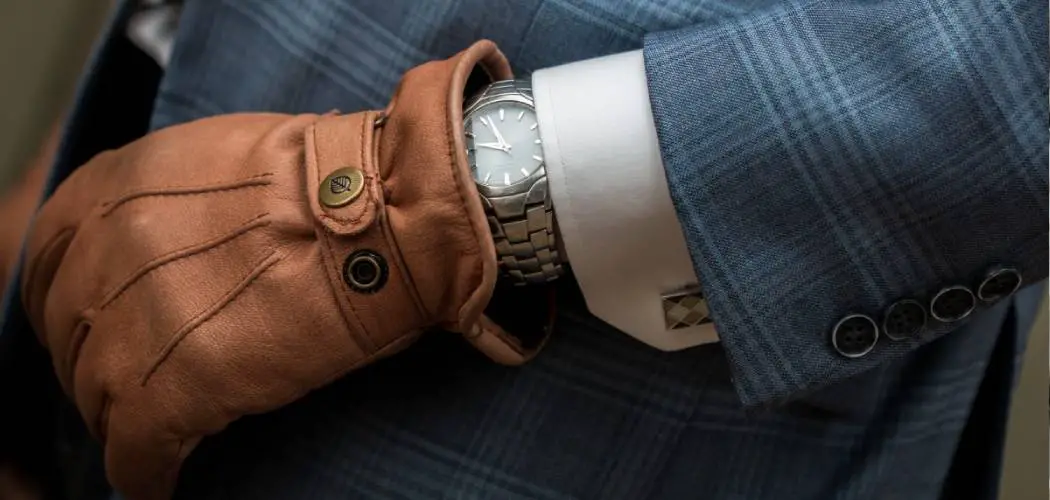
Leather gloves are great for protecting your hands from the cold on a chilly winter day or while you’re working outdoors. However, they can be stiff and uncomfortable if you’ve never worn them before. In addition, many people don’t realize that leather gloves can be softened or conditioned. If you’ve ever owned a pair of leather gloves and wished they were more comfortable, the following information will help you get the most out of your leather gloves.
How to Soften Leather Gloves Detailed Guide
Method 1: Applying Leather Conditioner
A Leather conditioner is a substance that aims to make the leather more supple and soft. How well it works depends on the formula of your specific conditioner. Apply Leather conditioner helps to make the leather glove more flexible and comfortable. Additionally, it prevents the glove from drying out and cracking. The result is a soft, supple glove that will give you years of excellent service.
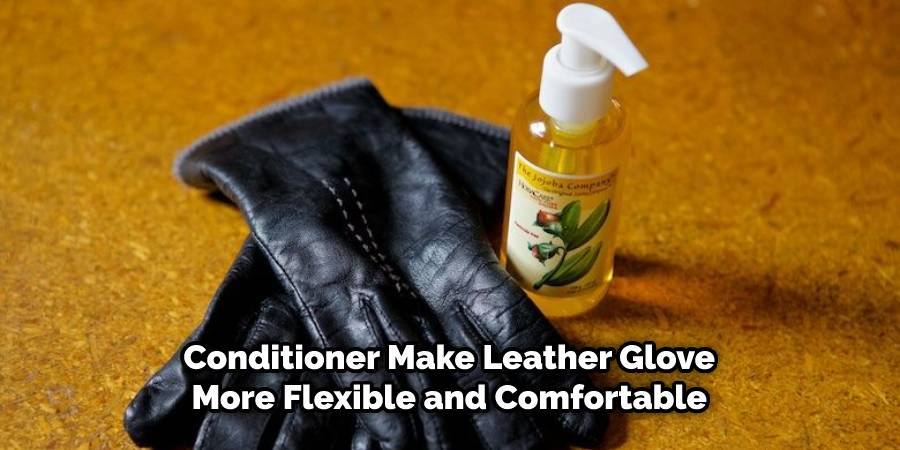
Steps:
1. Clean gloves with soap and water to remove dirt, mud, oil, and other contaminants from the leather gloves. Be careful not to saturate the leather if it is made of suede or napped leather.
2. Apply a generous amount of conditioner over all parts of the glove you want to soften (especially on dry areas), including the palms, backs, fingers, and knuckles. Use your hands or a soft cloth to rub in circular motions until it has been evenly applied (the entire glove should appear wet).
For larger areas like the back of your hand, allow at least 10 minutes for product penetration before continuing because the skin can absorb both moisture and chemicals present in harsh-smelling products; your skin may become irritated by applying harsh chemicals after they have already been absorbed.
3. Allow the conditioner to remain on the leather for at least 15 minutes or longer. The longer it is left, the deeper into the fibers it will penetrate and soften them.
4. When you are satisfied with its penetration (about 5-15 minutes), wipe off any excess conditioner using a soft cloth like an old t-shirt, paper towels, or cheesecloth. Do not saturate your glove by wiping repeatedly; this will remove too much conditioner from the leather and leave it dry again. If you need to use water (to wipe away any debris), be sure that it is lukewarm/room temperature because warm water can also damage leather over time by speeding up the drying process.
5. After wiping gently with a cloth, allow the gloves to air-dry for another 15 minutes before wearing them. How quickly they dry will depend on the type of leather being conditioned and other factors such as humidity and temperature.
Method 2: Using Rubbing Alcohol
Rubbing alcohol is a good choice for softening leather gloves because it is an effective solvent that penetrates the glove’s fibers, dissolving some of the natural oils and moisturizers responsible for tough, stiff leather. How quickly this works will depend on the type of alcohol (isopropyl alcohol/denatured ethyl alcohol) and its concentration (higher concentrations work more rapidly than lower ones).
Steps:
1. Apply rubbing alcohol to clean cotton or soft cloth like cheesecloth. Do not saturate the glove because it can damage the leather by over-wetting it; only apply enough to dampen the surface. Beware not to touch any surfaces with your bare hands unless they have been thoroughly cleaned and washed first, as they can leave behind dirt and bacteria that will contaminate the leather.
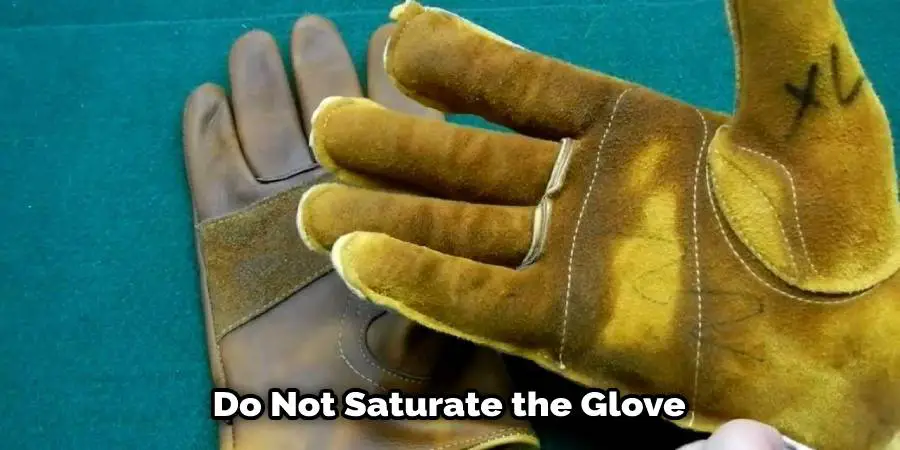
2. Apply to the leather in small amounts (large amounts may bleed into the white knit cuff). How much time it takes will depend on how tough/thick your glove’s leather is, what type of alcohol you are using, and its concentration level. The more heavy-duty or thicker the glove is, the longer it should soak for; like with shoe polish, the key is to leave enough time for the solution to saturate deep down into it without drying too quickly where rust rings can form.
3. Once your glove has been saturated thoroughly with rubbing alcohol (this could take anywhere between 20 minutes to an hour), allow it another 30 minutes to dry out before wearing them. This will not take as long if you use a stronger concentration of isopropyl alcohol because it penetrates deeper into the leather fibers more quickly. How long they dry also depends on the kind of leather, thickness/weight, and environment (outdoor conditions can make gloves take longer to dry).
4. After wearing, if you notice that your gloves are still stiff, allow them to soak overnight before wearing again; it may require several treatments before softening. How effective this solution works also depends on how thick or tough the glove’s leather is (sometimes even deerskin gloves can be very stiff) and what type of alcohol you use (some work faster than others). Rubbing Alcohol is beneficial for softening new leather gloves because its drying time doesn’t take too long, which helps prevent the premature oxidation of the glove’s leather.
Method 3: Shaving Cream
Using a shaving cream or gel is a good choice because it contains ingredients that can penetrate deep into the leather, moisturizing and softening it. How effective this will work also depends on the type of leather being conditioned and what kind of shaving cream you use. How long it needs to soak for will depend on its thickness/weight and the concentration of its ingredients. It may require several treatments before softening completely.
Steps:
1. Saturate your glove inside-out with shaving cream to thoroughly moisten every square inch. How much time this treatment needs will depend on how tough/thick your glove’s leather is, what type of shaving cream you are using, and its concentrations: The more heavy-duty or thicker the glove is, the longer it should soak for.
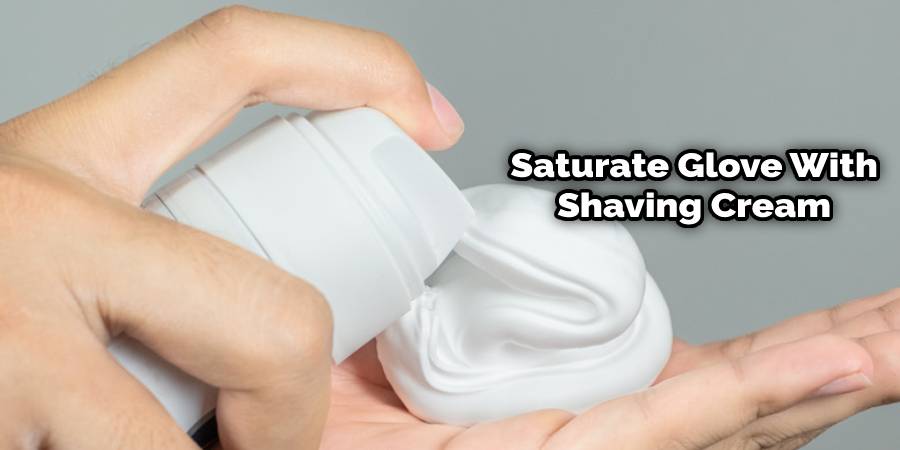
2. Let your glove dry thoroughly before wearing. This could take anywhere between 20 minutes to an hour depending on how thick or tough your leather is, what type of shaving cream you are using and whether you leave them outside in low humidity conditions where they can dry quickly. Be sure to wear a dark-colored T-shirt underneath so that dye doesn’t come off onto other garments.
3. If needed after wearing, allow the glove’s leather inside-out to soak overnight before wearing again. How effective this solution works depends on how thick or tough the glove’s leather is (some work faster than others).
Method 4: Mink Oil
Mink oil is an option that should be used sparingly because it contains a hefty concentration of waxes/oils that could leave a greasy shine on the glove’s leather. How effective this solution works depends on how tough/thick your glove’s leather is and if appropriately applied to keep the excess from transferring onto other surfaces. Also, how long it needs to soak depends on its thickness/weight and the product you choose: The thicker the glove, the longer it should absorb.
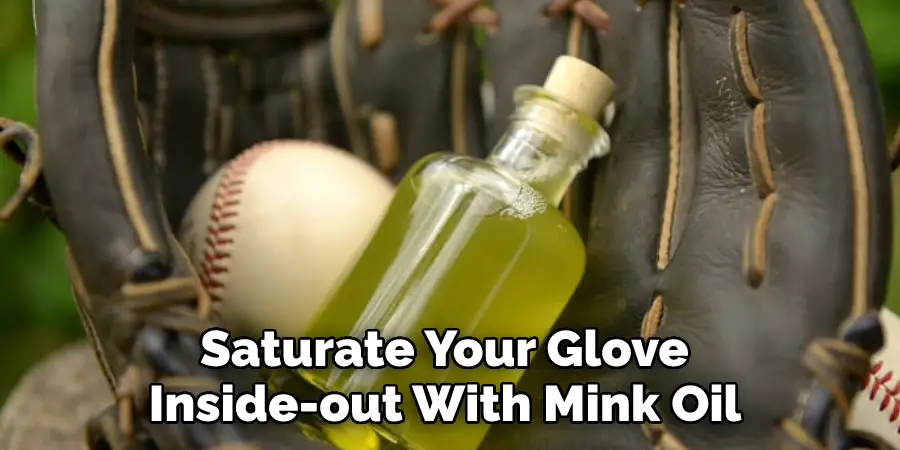
Steps:
1. Saturate your glove inside-out with mink oil to thoroughly moisten every square inch. How much time this treatment needs will depend on how tough/thick your glove’s leather is, what kind of mink oil you are using (some types contain more waxes than others), and its concentration levels.
2. Let your glove dry thoroughly before wearing. How long it needs to soak for will depend on its thickness/weight and the product you choose: The thicker the glove, the longer it should soak for. If appropriately applied, mink oil can be used several times without any issues.
3. After wearing, if you notice that your gloves are still stiff, allow them to soak overnight before wearing again; it may require several treatments before softening. How effective this solution works also depends on how thick or tough the glove’s leather is (sometimes even deerskin gloves can be very stiff) and what type of mink oil you use (some work faster than others).
Method 5: Lanolin
Lanolin is an excellent choice because it contains natural emollients that penetrate deep into the leather, moisturizing and softening it. How effective this will work also depends on the type of leather being conditioned and what kind of lanolin you use. How long it needs to soak for will depend on its thickness/weight and the concentration levels of its ingredients: The more heavy-duty or thicker the glove is, the longer it should soak for.
Steps:
1. Saturate your glove inside-out with lanolin to thoroughly moisten every square inch. How much time this treatment needs will depend on how tough/thick your glove’s leather is, what type of lanolin you are using (some contain waxes and oils than others), and its concentrations.
2. Let your glove dry thoroughly before wearing. How long this takes will depend on how thick or tough your leather is, what type of lanolin you use, and its concentrations: If appropriately applied, lanolin can be used several times without any issues.
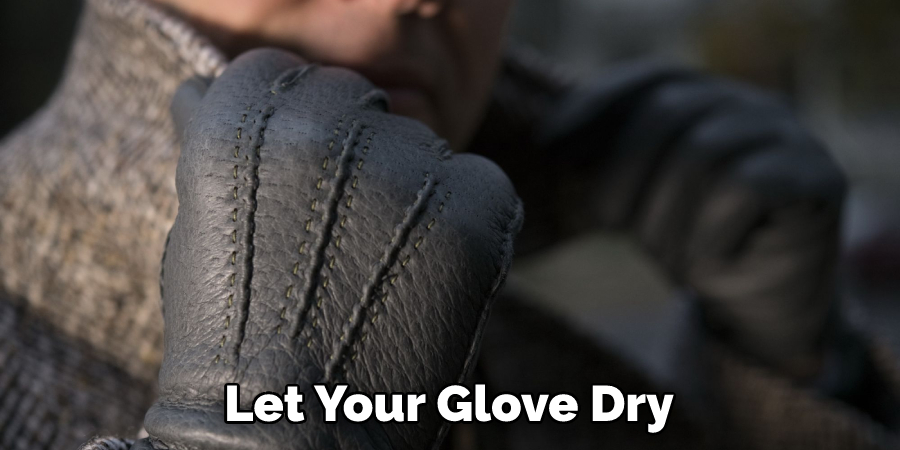
3. After wearing, if you notice that your gloves are still stiff, allow them to soak overnight before wearing again; it may require several treatments before softening. How effective this solution works also depends on how tough/thick the glove’s leather is (sometimes even deerskin gloves can be very stiff) and what type of lanolin you use (some work faster than others). These methods will help in how to soften leather gloves.
Frequently Asked Questions
Do You Make Leather Gloves Supple Again?
In general, leather gloves need to be conditioned and treated on a regular basis to avoid cracking, peeling, or drying out. Here are a few tips to help you get started:
1. Preheat your gloves in the oven before putting them on – This will help reduce the chances of them becoming dry and brittle.
2. Apply a layer of conditioner every time you wear them – This will help prevent cracking, peeling, or drying out.
3. Use a glove protector – This will help keep your gloves from becoming stained and dirty.
4. Store your gloves in a cool, dry place – Keep them away from direct sunlight and heat sources to prevent them from cracking or drying out.
Is Vaseline Good for Leather Gloves?
Vaseline is a petroleum-based cream that is often used as a lubricant and to protect your leather from moisture. While some people may swear by its efficacy, Vaseline should not be used on leather gloves because it can damage the skin and cause premature wear. If you must use Vaseline on your gloves, make sure to apply it thinly so that it does not build up in the crevices of the glove and create an uncomfortable barrier between your skin and the fabric.
Is Olive Oil Good for Leather Gloves?
Many people believe that olive oil can be beneficial for leather gloves because it helps to keep the skin soft and prevents them from drying out. It is also particularly effective at protecting against rain, snow, and other elements that might damage the glove’s surface.

However, there are some risks associated with using olive oil on leather gloves. First of all, if Applied too liberally or incorrectly, it may cause staining or a loss of color in the leather. Additionally, olive oil can dull your glove’s finish which could lead to wear and tear over time.
What is the Best Lubricant for Leather?
There are a variety of lubricants that can be used on leather, but the best overall may be petroleum jelly. Petroleum jelly is made up of hydrocarbons and has high viscosity properties which make it an excellent lubricant. It also doesn’t contain any harmful chemicals or additives, so it’s safe to use on both new and old leather furniture.
Another option for a good all-around lubricant is vegetable oil. This type of oil is usually mixed with mineral oil or other solvents to make it more compatible with different types of surfaces.
Conclusion
So, there you have it! Five foolproof ways to soften your leather gloves. If you’ve been struggling to make your gloves more comfortable, give one of these methods. And if you still have trouble, don’t hesitate to reach out for help. We hope this article on how to soften leather gloves was helpful and that you enjoy wearing your newly softened gloves all winter long!
You may also like – How to fix over conditioned leather.

